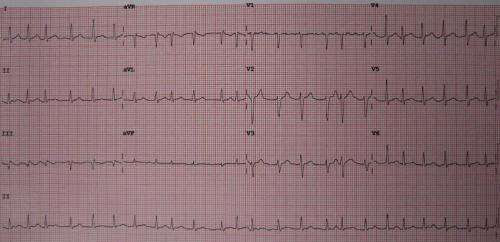by Wiley

A 12 lead ECG showing atrial fibrillation at approximately 150 beats per minute. Credit: James Heilman, MD/Wikipedia/CC BY-SA 3.0
New research published in the Journal of Internal Medicine demonstrates that optogenetics—which uses light-sensitive proteins to control the activity of targeted cells—is a promising shock-free approach to treating atrial fibrillation (AF), or an irregular, often rapid heart rate, for immediate restoration of regular rhythm.
Current treatments for AF—including medications and shocks to restore a regular heart rhythm—come with low success rates and/or serious side effects. In this new study, rats’ hearts were optogenetically modified to express light-gated ion channels. After AF was induced, the animals’ chests were illuminated resulting in acute restoration of regulation rhythm. This shows that sufficient light penetrated the chest wall, which suggests that full penetration of the human atrial wall may be feasible as well, if deemed necessary for clinical translation.
“Shock-free cardioversion of AF would allow restoration of regular rhythm at any place and time, which may improve the prognosis and quality of life of patients suffering from AF. We hope that our paper will contribute to the realization of this much desired option in clinical practice,” said corresponding author Daniël A. Pijnappels, Ph.D., of Leiden University Medical Center, in The Netherlands.

Leave a Reply